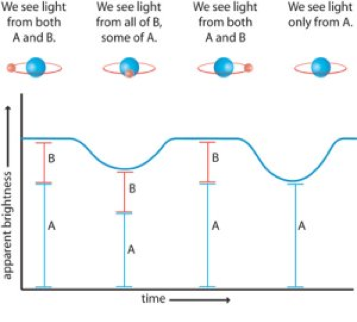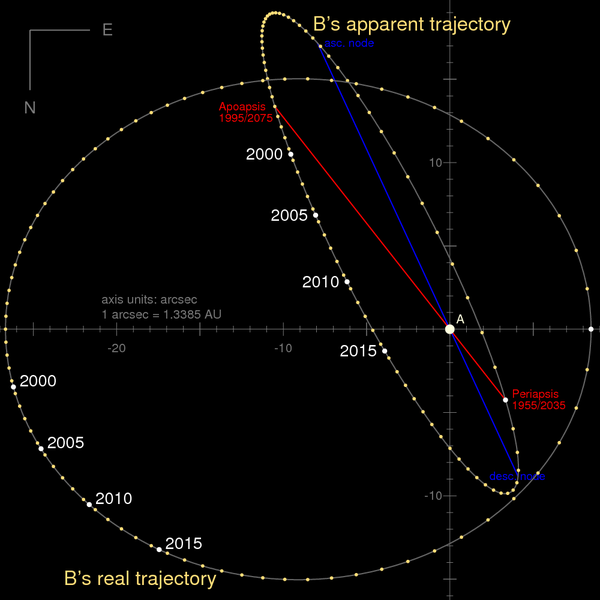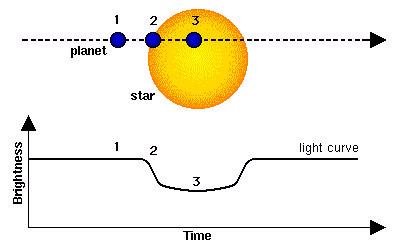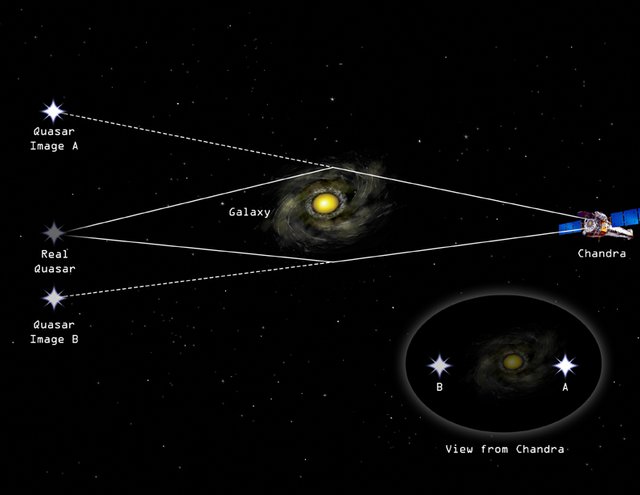Exploring and finding exoplanets is not as easy as we think. Let's see why.
It is easy to imagine a man in a white coat looking through a huge telescope, but the sad reality is that no current optical telescope allows us to see the cosmos as it is light years away. The problem is that very bright objects, such as stars or novae, are visible as small dots, but the planets do not emit light. Trying to find them with the naked eye is like trying to find black balls in a dark room.

Exoplanet detection
The search for extrasolar planets, that is, for planets that orbit stars other than the Sun, is a job that It started not many years ago. Before 1995, it was certain that there must be many other systems planetariums apart from ours, but in reality there was no evidence to validate this assumption. But that year, the use of a series of new instruments and techniques allowed us to find the first extrasolar planet, 51-Pegasi-b, which orbits the 51-Pegasi star located about 50 light-years from our Solar System. This planet is very far and also orbits very close to its star so it is not possible to observe it directly. The data collected indicated that the planet should be massive but with a very low average density, which implied that it was a giant gas planet similar in size to our planet Saturn. The fact that a giant gas planet orbitara so close to its star involved a serious questioning to the formation theory of planetary systems that predicts that gaseous giant planets can only form away from the star that orbit. This controversy triggered a revision of the formation theory of planetary systems and derived in the proposal of new theories that are still being debated, such as the theory of planetary migration. In the years that followed, several hundred gaseous giant planets orbiting very close to each other were discovered. their respective stars, proving that 51-Pegasi-b is not a strange case but rather a typical case. As the Direct observation of exoplanets - using telescopes - is not feasible due to distances and because light from stars tend to hide the bodies that orbit it within a certain radius, the detection techniques that are apply to the discovery of extrasolar planets are indirect. Among the most used techniques is the calculation of the radial velocity of the star through Doppler shift analysis; the technique of detection of planetary transits, that is, the passage of the planet in front of its star; and the techniques of Astrometry that consist of detecting the "pitching" characteristic of a star that is orbited by a planet.
There are different types of exoplanet detection, such as:
Astrometry
Since the star rotates on the center of mass it is possible to try to register the variations of position and the oscillation of the star. Even though these variations are very small. In 2002, the Hubble Space Telescope succeeded in using astrometry to characterize a planet previously discovered around the star Gliese 876.
Very slight movements of the star in the sky must be detected (one millisecond of arc). It is very difficult to measure, planets must be very massive, have a long period and measurements must be made for years.
If our solar system would be composed only by Jupiter, it would take 30 years to take the measurements, the astrometric motion is of the order millionths of a degree, and the center of mass would be on the surface of the Sun.
In addition to the basic function of offering astronomers a frame of reference for their observations, astrometry is fundamental in fields such as celestial mechanics, stellar dynamics and galactic astronomy.
- Identify objects within images.
- Synchronization and maintenance of universal time, which is obtained by synchronizing atomic clocks with the rotation movement of the Earth using astrometric observations.
- Determine own movements.
- Calculate trigonometric paralages.
- Detect astrometric binary stars.
- Orientation in space probes.
- Calculation of orbits and tracking of solar system objects such as asteroids or comets.
- Calculation of orbits and tracking objects that orbit the Earth, such as satellites or space junk.
- Study of the dynamics of the stars of the Milky Way.
Radial Speed

This method is based on the Doppler effect. The planet, by orbiting the central star, also exerts a gravitational force on it so that the star rotates on the common center of mass of the system. The oscillations of the star can be detected by slight changes in the spectral lines as the star approaches us (shift towards blue) or moves away (redshift). This method has been the most successful in the search for new planets, but it is only effective in the giant planets closest to the main star, so it can only detect a small fraction of the existing planets.
The Doppler Effect occurs when a wave source (for example, light or sound) approaches or moves away from the observer. Then, the frequency of the wave produced by the source is not the same as the observer can measure. This is the effect that occurs when a train that honks its horn passes close to us: before it passes the sound feels sharper (higher frequency, negative radial speed) than when the train is already moving away (lower frequency, positive radial velocity).
Transit
It consists of observing photometrically the star and detecting subtle changes in the intensity of its light when a planet orbits in front of it.
This method is widely used by amateurs since it requires modest instrumental and contributions to the scientific community can be of utmost importance.
The transit method is the most commonly used in the search for extrasolar planets. The Corot missions (2006) of the ESA, and Kepler (2009) of NASA, have put into orbit satellites with extremely sensitive CCD-type photometric sensors, which are expected to find out the number of planets in the galaxy, as well as find planets of the size and orbit of the Earth by the end of 2012.
Gravitational microlenses
The gravitational lens effect occurs when the gravity fields of the planet and the star act to increase or focus the light of a distant star. For the method to work, all three objects have to be almost perfectly aligned. The main defect of this method is that the possible detections are not repeatable, so the planet thus discovered should be studied additionally by one of the previous methods. This strategy succeeded in detecting the first planet of low mass in a wide orbit, designated OGLE-2005-BLG-390lb.
Gravitational lenses were predicted by Einstein's theory of general relativity. In 1919 the accuracy of the prediction could be proved. During a solar eclipse the astronomer Arthur Eddington observed how the path of light from distant stars curved as it passed close to the Sun, producing an apparent displacement of its positions. Gravitational lens phenomena can be used to detect the presence of massive invisible objects, such as black holes, dark matter and even extrasolar planets.
Third Kepler Law - Newtoneana Extension
In 1609, Johaness Kepler formulated his famous three laws of planetary motion. His third law, which relates the period of translation with the average distance to the Sun, proposes that "The square of the periods of the orbit of the planets is proportional to the cube of its average distance to the Sun."

Newton, years later, proposed his Law of Universal Gravitation, which among other things explained and gave a numerical frame to the three laws of Kepler. In this numerical frame, he firmly established the proportionality constant of the third law, returning it to the following form:

Where:
a: is the semimajor axis of the planetary orbit.
G: is the Universal Gravitation Constant.
M: is the total mass of the two bodies involved (Sun + Planet, Earth + Moon, etc.).
P: is the period of translation of the planet
Eclipsing binary

If a planet has a large orbit that carries it around two members of an eclipsing double star system, then the planet can be detected through small variations at the time of the eclipses of the stars with each other. The Kepler planets -16b, Kepler-34b and Kepler-35b are circumbinary planets detected by this method.
Conclusion
As can be seen, the search for exoplanets is an arduous investigation and tends to last many years. Many of the scientists who have made this type of discovery may not see how their projects conclude. So you have to have a lot of patience. But with the advances we have every day we will soon be traveling to one of those planets. If the circumstances and the studies allow it.
Ref
Thank you for taking the time to read this publication. I hope you have a happy day, see you in the next. Do not forget to leave a comment about what you thought, thank you very much. @juanjdiaz89




So many things to learn in our Universe. Thanks @juanjdiaz89 for sharing.
tulisan anda sangat bagus
Thx man
@originalworks
The @OriginalWorks bot has determined this post by @juanjdiaz89 to be original material and upvoted it!
To call @OriginalWorks, simply reply to any post with @originalworks or !originalworks in your message!
You got a 2.85% upvote from @upme requested by: @juanjdiaz89.
Send at least 2.5 SBD to @upme with a post link in the memo field to receive upvote next round.
To support our activity, please vote for my master @suggeelson, as a STEEM Witness